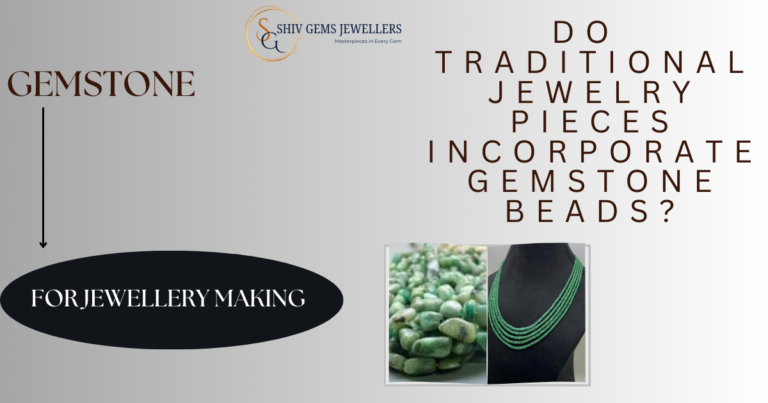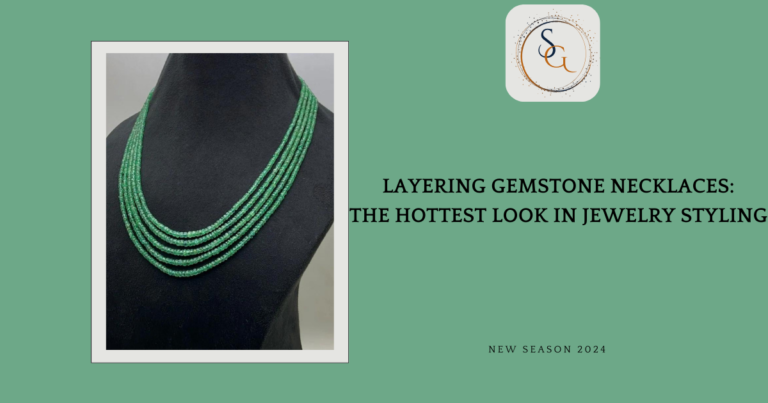Gemstones have captivated human interest for centuries, celebrated for their beauty, rarity, and value. Within the world of gemstone, they are often categorized into two primary types: precious and semi-precious. While both types are valued for their aesthetic appeal, they differ significantly in terms of rarity, value, and usage. Here’s a detailed exploration of the similarities and differences between semi-precious and precious gemstones:
Similarities
- Beauty and Aesthetic Appeal Both precious and semi-precious gemstones are admired for their beauty and can add exceptional visual appeal to jewelry. They come in a wide range of colors, cuts, and qualities that make them desirable for crafting exquisite pieces.
- Cultural and Symbolic Significance Gemstones of all types often hold cultural and symbolic meanings. Whether precious or semi-precious, gemstones are frequently used in various cultures for their believed healing properties, spiritual significance, or as symbols of wealth and status.
- Uses in Jewelry and Decoration Both categories of gemstones are used in jewelry, including rings, necklaces, bracelets, and earrings. They are also utilized in decorative items and collectibles. Their ability to be cut and polished into various shapes makes them versatile for design purposes.
- Need for Care Regardless of their classification, all gemstones require proper care to maintain their luster and durability. This includes cleaning, avoiding harsh chemicals, and protecting them from physical damage.
Differences
- Rarity and Value
- Precious Gemstones: These are considered rarer and more valuable. The traditional “big four” precious gemstones are diamonds, rubies, sapphires, and emeralds. Their rarity, combined with high demand, contributes to their higher market value.
- Semi-Precious Gemstones: These are more abundant and generally less expensive compared to precious gemstones. Examples include amethyst, turquoise, garnet, and peridot. While still beautiful and valuable, they do not command the same prices as precious gemstones.
- Market Perception
- Precious Gemstones: The value of precious gemstones is often higher due to their rarity, durability, and the prestige associated with them. They are frequently featured in high-end jewelry and are considered symbols of luxury and status.
- Semi-Precious Gemstones: These are perceived as more accessible and affordable. They are often used in fashion jewelry and more casual designs, making them popular choices for everyday wear and varied styles.
- Durability and Hardness
- Precious Gemstones: Many precious gemstones, such as diamonds and sapphires, have high hardness ratings on the Mohs scale, making them highly durable and suitable for daily wear. For instance, diamonds are the hardest natural material known.
- Semi-Precious Gemstones: While many semi-precious gemstones are durable, some are softer and more susceptible to scratching and damage. For example, opals and turquoise have lower hardness ratings and require more careful handling.
- Color and Variety
- Precious Gemstones: Precious gemstone are often valued for their intense and specific colors. For example, rubies are prized for their deep red hues, and sapphires are known for their rich blue tones.
- Semi-Precious Gemstones: These stones come in a broader range of colors and patterns. Semi-precious gemstones like amethyst and garnet offer a wide variety of hues, which can be used to create diverse and colorful designs.
- Historical and Cultural Value
- Precious Gemstones: Historically, precious gemstone have been associated with royalty and high social status. They have been used in crowns, scepters, and other regal items throughout history.
- Semi-Precious Gemstones: While semi-precious gemstone have also held cultural significance, they are often associated with local traditions and are used in a variety of decorative and personal adornments.
Conclusion
Precious and semi-precious gemstones each have their unique attributes, roles, and values in the world of jewelry and ornamentation. Precious gemstones are characterized by their rarity, high value, and durability, making them symbols of luxury and status. Semi-precious gemstones, while more abundant and affordable, offer a wide range of colors and designs that make them versatile and popular for various types of jewelry. Understanding the similarities and differences between these two categories helps in making informed choices, whether you are purchasing jewelry or designing pieces for personal or commercial use.







